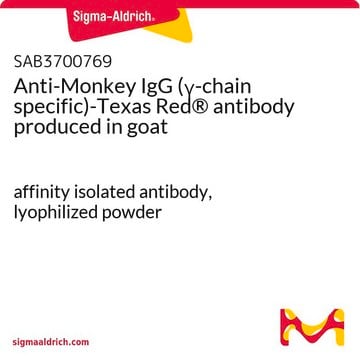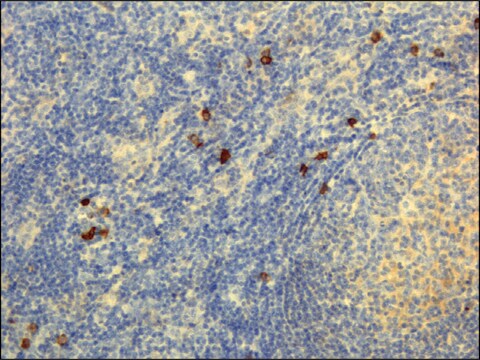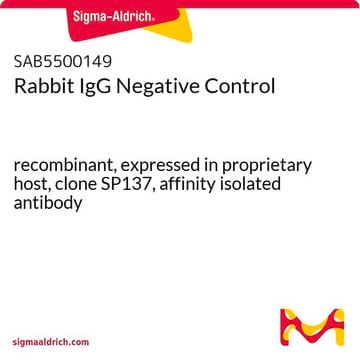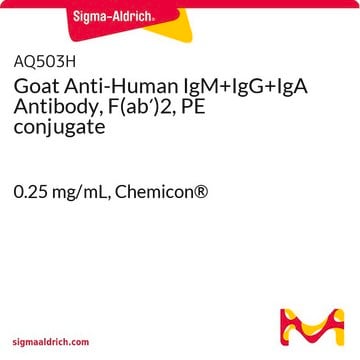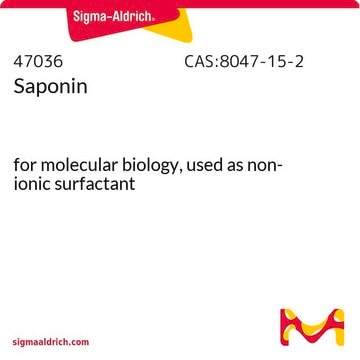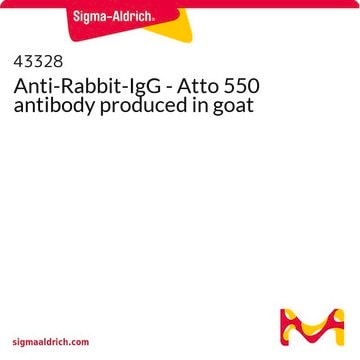F3893
Anti-Monkey IgG (whole molecule)−FITC antibody produced in rabbit
affinity isolated antibody, buffered aqueous solution
Sinônimo(s):
Rabbit Anti-Monkey IgG (whole molecule)−Fluorescein isothiocyanate
Selecione um tamanho
R$ 1.737,00
Selecione um tamanho
About This Item
R$ 1.737,00
Produtos recomendados
fonte biológica
rabbit
conjugado
FITC conjugate
forma do anticorpo
affinity isolated antibody
tipo de produto de anticorpo
secondary antibodies
clone
polyclonal
Formulário
buffered aqueous solution
condição de armazenamento
protect from light
técnica(s)
dot immunobinding: 1:64
temperatura de armazenamento
−20°C
modificação pós-traducional do alvo
unmodified
Categorias relacionadas
Descrição geral
Especificidade
Imunogênio
Aplicação
forma física
Exoneração de responsabilidade
Não está encontrando o produto certo?
Experimente o nosso Ferramenta de seleção de produtos.
Código de classe de armazenamento
10 - Combustible liquids
Classe de risco de água (WGK)
nwg
Ponto de fulgor (°F)
Not applicable
Ponto de fulgor (°C)
Not applicable
Equipamento de proteção individual
Eyeshields, Gloves, multi-purpose combination respirator cartridge (US)
Escolha uma das versões mais recentes:
Certificados de análise (COA)
Não está vendo a versão correta?
Se precisar de uma versão específica, você pode procurar um certificado específico pelo número do lote ou da remessa.
Já possui este produto?
Encontre a documentação dos produtos que você adquiriu recentemente na biblioteca de documentos.
Active Filters
Nossa equipe de cientistas tem experiência em todas as áreas de pesquisa, incluindo Life Sciences, ciência de materiais, síntese química, cromatografia, química analítica e muitas outras.
Entre em contato com a assistência técnica